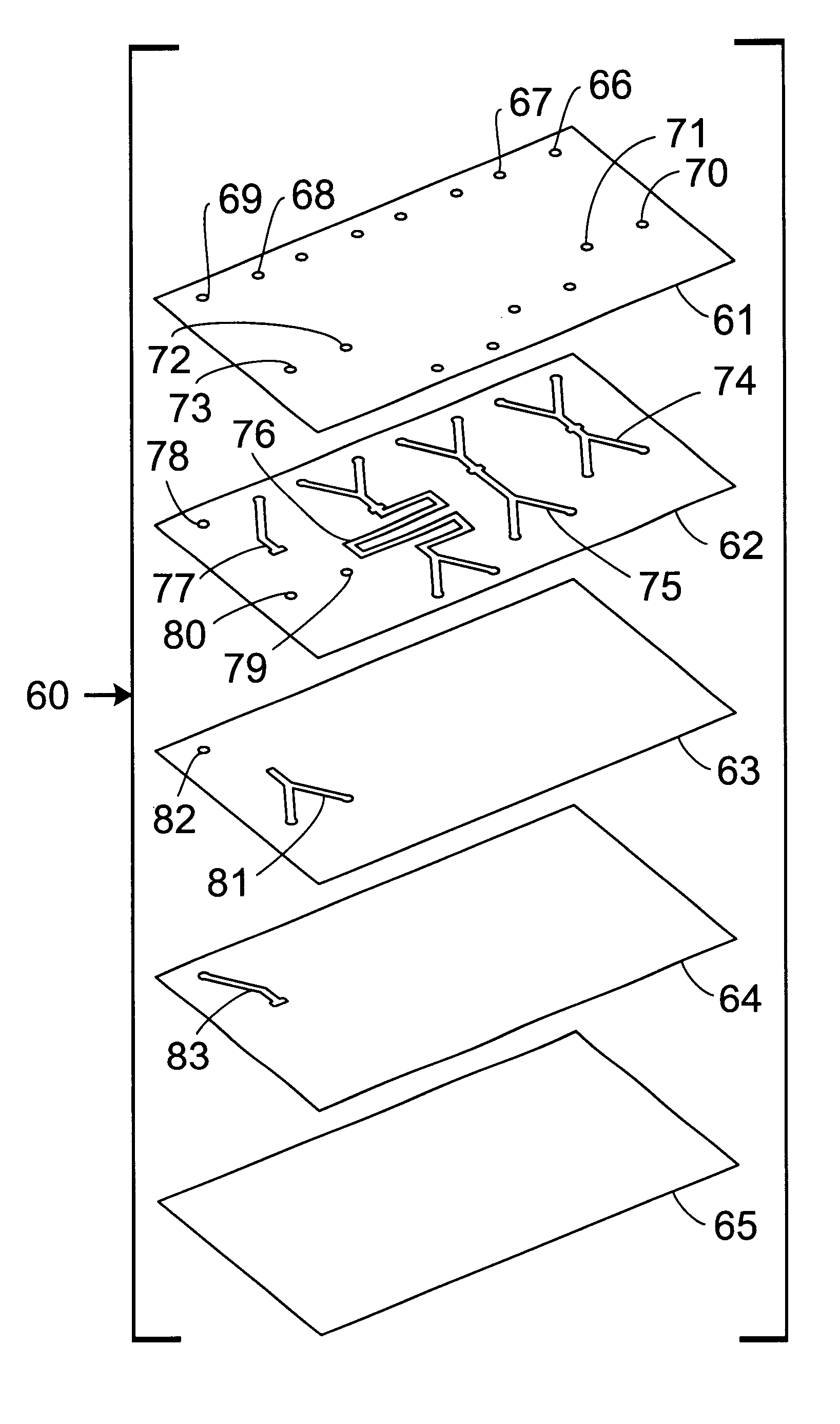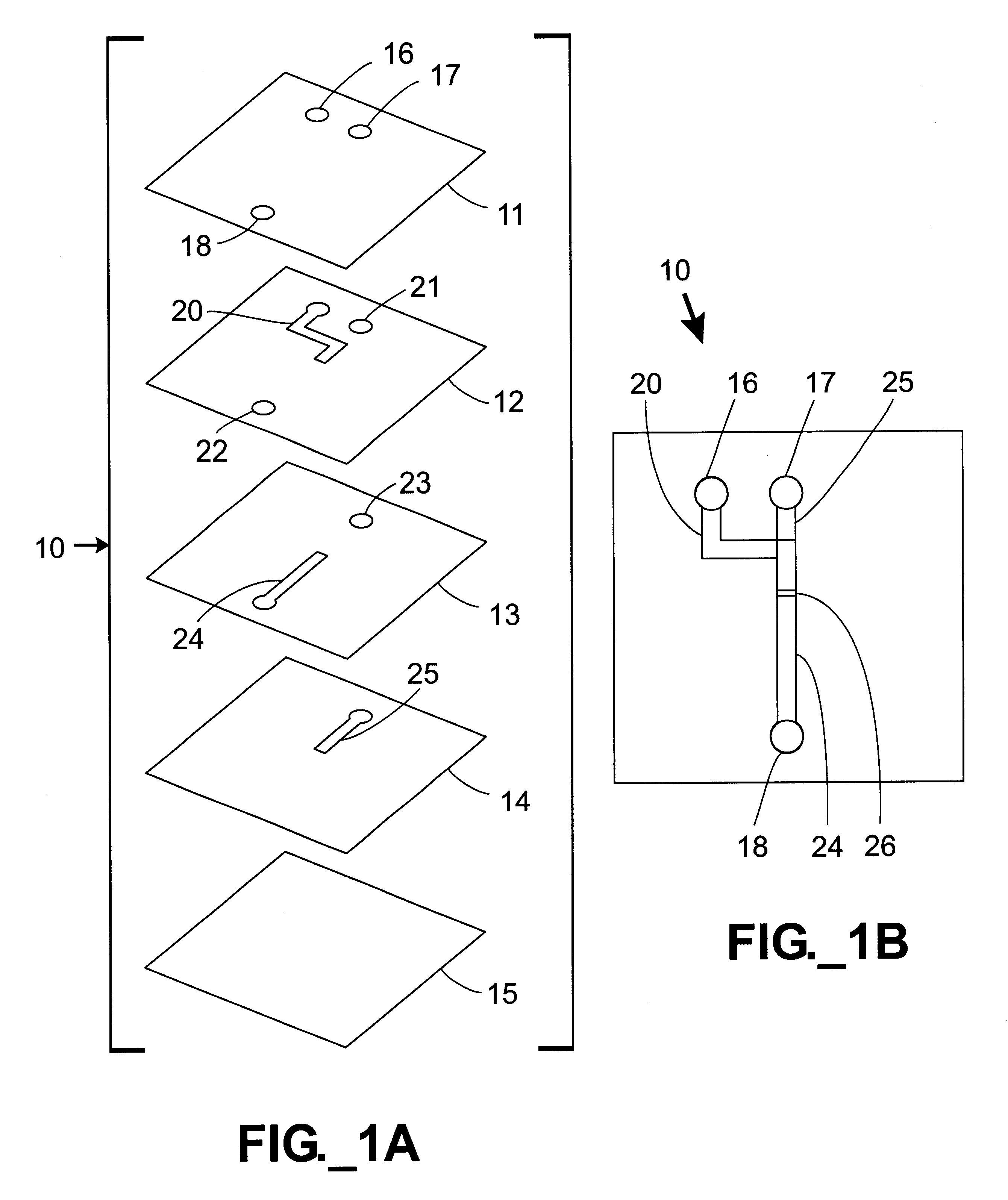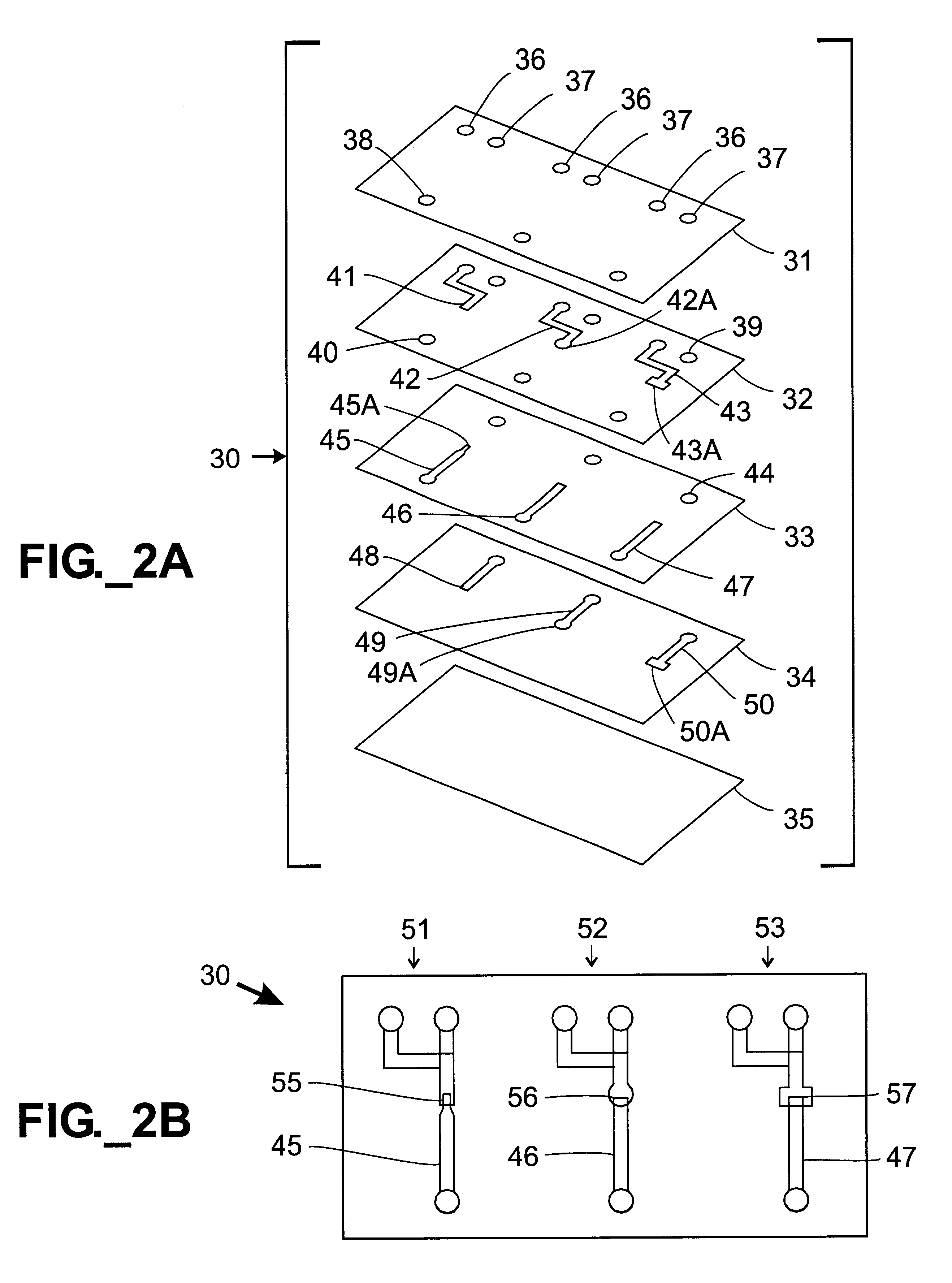Microfluidic separators
a technology of microfluidic separator and separator plate, which is applied in the direction of flow mixer, diaphragm, water/sewage treatment, etc., can solve the problems of high tool-up cost for both of these techniques, inflexible and inability to meet the needs of rapid prototyping and manufacturing flexibility
- Summary
- Abstract
- Description
- Claims
- Application Information
AI Technical Summary
Problems solved by technology
Method used
Image
Examples
example devices
In the embodiment shown in FIGS. 1A-1B, a microfluidic mixing device 10 is constructed with sandwiched stencil layers. Referring to FIG. 1A, a microfluidic mixer 10 is constructed by sandwiching three stencil layers 12-14 and adhering them between substrates 11,15. The stencil layers 12-14 define various channels 20, 24, 25 and apertures 16-18, 21-23. Inlet ports 16,17 and an outlet port 18 are in the top device layer 11. The assembled device 10 is shown in FIG. 1B. In use, a first fluid is injected into inlet port 17, passes through through-holes 21, 23 in the layers 12 and 13 and enters the channel 25. A second fluid enters inlet port 16 and passes through channel 20. The two fluids meet at the overlap region 26 shown in FIG. 1B. At this point, the fluids are forced to converge into a single channel 24 defined in stencil layer 13. As the fluids meet and pass into channel 24, the top half of the channel 24 contains the second fluid and the bottom half contains the first fluid. The ...
embodiment 90
Alternatively, a microfluidic mixer according to the present invention is shown. In this mixer 90, the inlet channels 77, 83 were constructed on different layers 62, 64 of a three dimensional structure. The inlet channels 77, 83 are in fluid communication at overlap region 95 where the two fluids to be mixed are forced to enter into an outlet channel 81, in this case located on a layer 63 intermediate to the layers 62, 64 defining the two inlet channels 77, 83. In this embodiment, at the overlap region 95 the interfacial contact area between the two fluids extends all the way across the width of the channel 81 and is fifteen times greater than in the previous mixer 91. In addition, the average distance that the molecules need to diffuse in order for mixing to occur is now two mils, rather than thirty mils as in the previous mixers 91-93.
This mixing behavior was demonstrated by performing a simple acid-base reaction within the mixers. In the mixer 90, a 0.1M NaOH solution was injecte...
PUM
| Property | Measurement | Unit |
|---|---|---|
| thickness | aaaaa | aaaaa |
| thickness | aaaaa | aaaaa |
| thickness | aaaaa | aaaaa |
Abstract
Description
Claims
Application Information
 Login to View More
Login to View More - R&D
- Intellectual Property
- Life Sciences
- Materials
- Tech Scout
- Unparalleled Data Quality
- Higher Quality Content
- 60% Fewer Hallucinations
Browse by: Latest US Patents, China's latest patents, Technical Efficacy Thesaurus, Application Domain, Technology Topic, Popular Technical Reports.
© 2025 PatSnap. All rights reserved.Legal|Privacy policy|Modern Slavery Act Transparency Statement|Sitemap|About US| Contact US: help@patsnap.com



